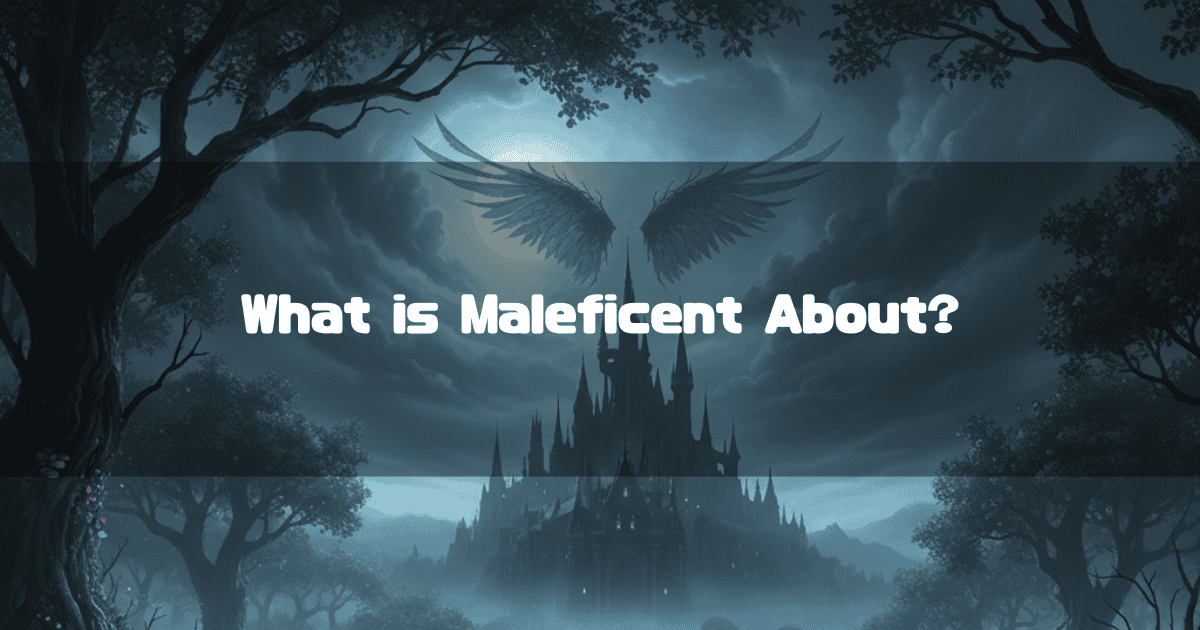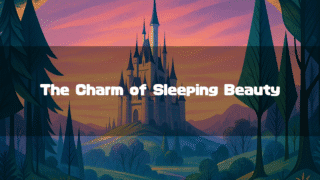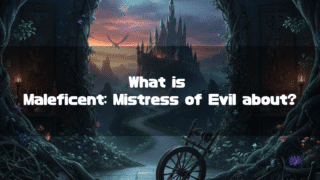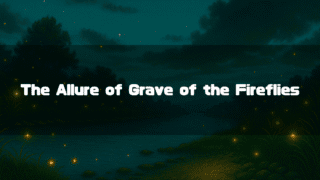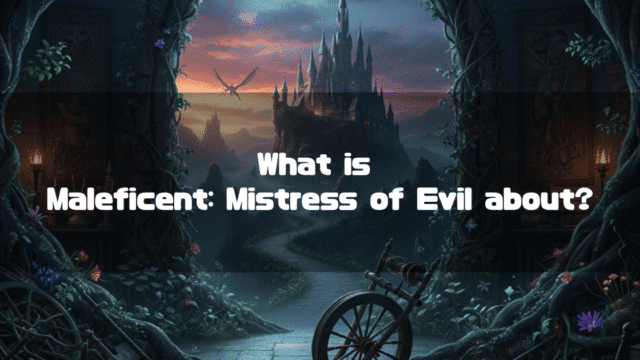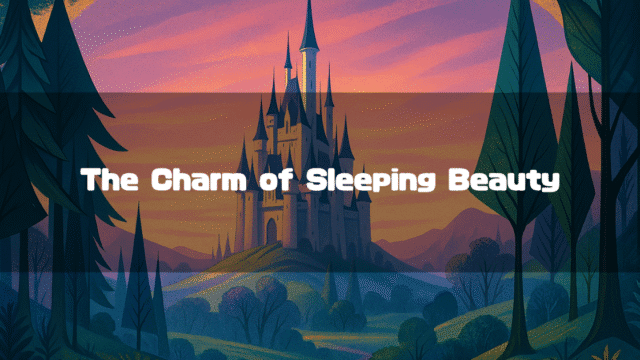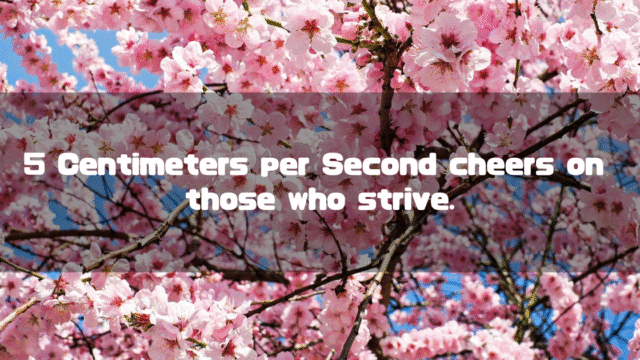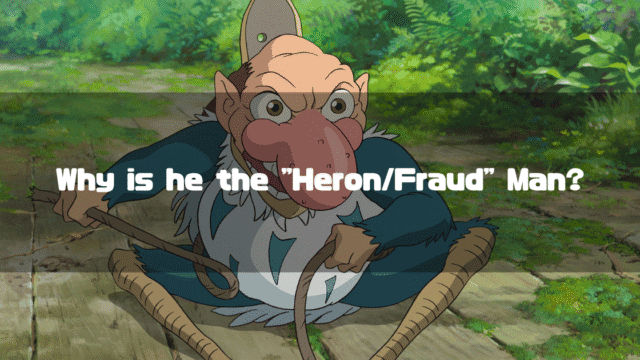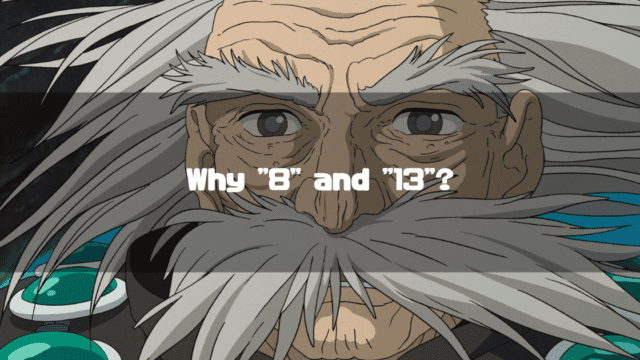Maleficent is a theatrical film directed by Robert Stromberg, released in the United States on May 30, 2014. It was produced by Walt Disney Pictures.
While this film is positioned as a remake of the 1959 Disney animation Sleeping Beauty, it is not a faithful live-action adaptation. It should be considered an entirely different work.
The original Sleeping Beauty is based on old European folk and fairy tales and does not have a clear protagonist (although Princess Aurora is at the “center” of the story). Maleficent also maintains the structure of a fairy tale, beginning with narration, but the protagonist is clearly Maleficent (the witch who curses Princess Aurora).
In this article, I will analyze Maleficent by comparing it with Sleeping Beauty to explore its appeal. The key point, I believe, is how making Maleficent the protagonist complements the questionable aspects inherent in the original fairy tale.
To consider this, let’s first look back at the synopses of Maleficent and Sleeping Beauty.
*This article is an English translation of the original Japanese article, “【マレフィセント】ネタバレあらすじと考察-「眠れる森の美女」のツッコミどころを補完、修正する物語-“.
Let an AI walk you through the highlights of this post in a simple, conversational style.
- Fixing the Original’s “Overreaction Problem”
In the original Sleeping Beauty, Maleficent’s motive for cursing Aurora—simply for not being invited to a celebration—felt unnatural. This film provides a compelling reason for her deep-seated revenge by depicting a tragic past where she was betrayed by her lover, Stefan, who stole her wings. - “True Love” as an Antithesis to Traditional Narratives
The film resolves the awkwardness of a prince’s kiss being “true love” after only just meeting. Here, the maternal love of Maleficent, who watched over and raised Aurora from the shadows, is portrayed as “true love,” presenting a different set of values from the conventional “happily ever after with the prince” story. - The Three Fairies Sacrificed for the Narrative Change
The three fairies, who were heroic figures in the original, are depicted as clumsy and unreliable in this version. This is a narrative convenience to highlight Maleficent’s love for Aurora as unique and singular, making them the “victims” of this remake. - Human Weakness in King Stefan’s Actions
King Stefan’s failure to dispose of Maleficent’s wings, the source of his nemesis’s power, is portrayed not just as keeping a war trophy, but as a reflection of his unbalanced inner self, unable to completely sever ties with the love he felt in his innocent youth.
Maleficent (2014) Synopsis (Spoilers Included)
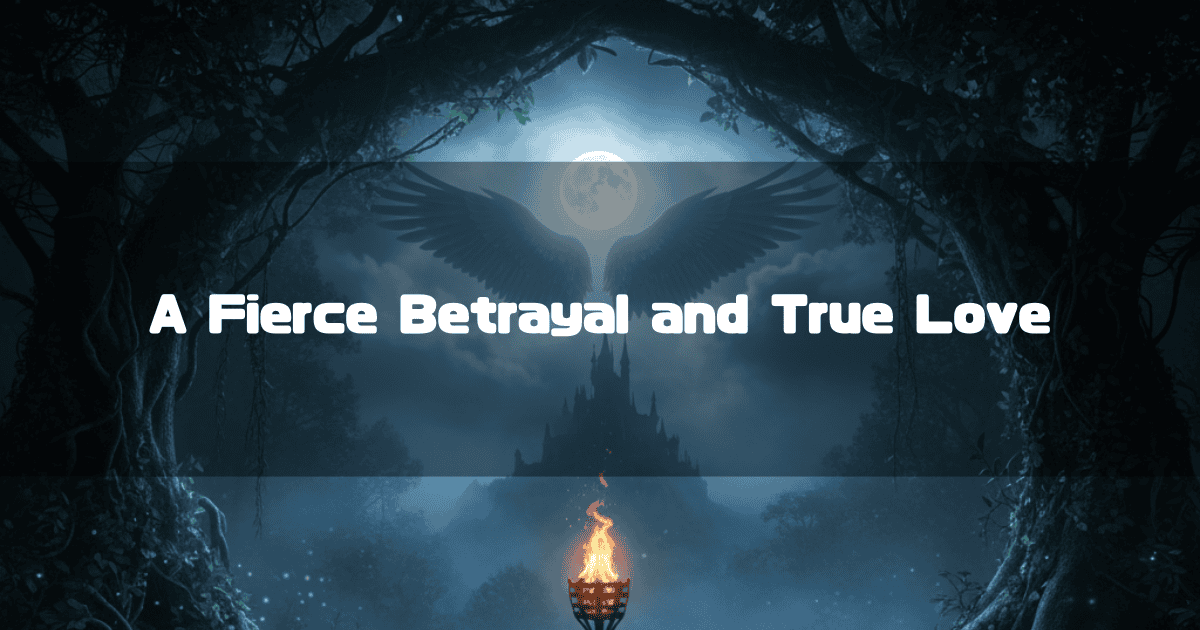
Quick Summary, Character Map and Differences from Sleeping Beauty
The key points of the Maleficent synopsis are as follows:
-
Betrayal and a Curse of Vengeance
The pure-hearted fairy Maleficent is betrayed by her first love, Stefan, who steals her wings. Burning with revenge against him, now a king, Maleficent curses his daughter, Aurora, to fall into a deep sleep on her 16th birthday, a sleep that can only be broken by true love’s kiss. -
Maternal Love Blossoming from Surveillance
To ensure her curse comes to pass, Maleficent watches over Aurora, who is raised in the forest. However, as she is touched by the princess’s innocence, her hatred gradually transforms into a deep, motherly affection. -
The Real “True Love”
When Aurora falls asleep as cursed, the prince’s kiss fails to awaken her. It is the kiss of affection that a despairing Maleficent places on the princess’s forehead that breaks the curse, proving to be “true love.” Reconciled, the two unite their kingdoms and restore peace.
Character Map

Story Explanation and Differences from Sleeping Beauty
The movie Maleficent is positioned as a remake of the 1959 animated film Sleeping Beauty, but it is not a direct live-action adaptation.
The main differences are listed below:
| Point | Sleeping Beauty (1959) | Maleficent (2014) |
|---|---|---|
| Protagonist and Antagonist | The protagonist is Princess Aurora. Maleficent is depicted as a purely evil villain. | The protagonist is Maleficent. Her former lover, King Stefan, becomes the antagonist. |
| Maleficent’s Motive | Revenge for not being invited to the celebration. | Deep hatred and a desire for revenge after being betrayed by her lover Stefan, who stole her wings. |
| Aurora’s Upbringing | Raised with love by three good fairies. | The three fairies are unreliable, and Maleficent herself protects and raises the princess from the shadows. |
| True Love’s Kiss | The curse is broken by a kiss from Prince Phillip, whom she met in the forest. | The prince’s kiss is ineffective; she is awakened by a kiss of maternal love from Maleficent. |
| Climax | Prince Phillip defeats Maleficent, who has transformed into a dragon. | Maleficent regains her wings and confronts King Stefan. The king falls from the castle to his death. |
| Ending | The prince and princess are united, and the kingdom lives happily ever after in a “happy ending.” | The human and fairy kingdoms are united, with Aurora becoming queen. Maleficent serves as her guardian, and they reconcile. |
As shown above, there are quite decisive differences, making it fair to say they are entirely different works.
The question is, “Why were these changes made?” Of course, one reason is likely to be an antithesis to the traditional narrative of “finding happiness by marrying a prince.” And that is probably the biggest reason.
The image of Maleficent, whose “wings” were stolen by a man named Stefan, clearly symbolizes “a woman who has been stripped of her power by a patriarchal society.”
However, with that premise in mind, if we look at the changes in the finer plot points, we can see that it brilliantly complements and corrects the questionable aspects inherent in the fairy tale of Sleeping Beauty.
In the latter half of this article, I will delve into this in detail, but first, let’s take a more detailed look at the synopsis of Maleficent.
Encounter and Betrayal
The story begins with the narration, “Let me tell you an old story anew.” Once upon a time, there were two neighboring kingdoms that did not get along: a kingdom of humans and the Moors, a realm of magical creatures. The humans, ruled by a greedy king, envied the beautiful and prosperous Moors. In contrast, the Moors, without a king or queen, lived in peace, with all creatures bound by trust. In this kingdom lived a young fairy with large wings, named Maleficent.
One day, Maleficent meets a human boy named Stefan who has wandered into the Moors. An orphan dreaming of one day living in a castle, Stefan finds a kindred spirit in Maleficent, who is also an orphan. When Stefan unhesitatingly throws away his iron ring, which burns fairies upon contact, the two form a bond and eventually fall in love. On Maleficent’s 16th birthday, Stefan gives her “true love’s kiss.”
However, as time passes, Stefan’s pure heart is consumed by ugly human ambition. Meanwhile, Maleficent grows into the most powerful fairy, serving as the protector of the Moors. The human King Henry invades the Moors but is defeated by Maleficent’s immense power and suffers a mortal wound.
The king declares, “Whoever defeats Maleficent shall have the throne and my daughter’s hand.” Stefan, craving the throne, plots to deceive and defeat Maleficent. Though he cannot bring himself to kill her due to his lingering feelings, Stefan cuts off her large wings, a symbol of her power, and takes them back as proof of his victory. Betrayed by the one she loved and having lost her wings, Maleficent sinks into deep despair.
The Curse and a Strange Upbringing
As promised, Stefan ascends to the throne and eventually has a daughter. At the celebration for the princess, named Aurora, three fairies from the Moors—Knotgrass, Thistlewit, and Flittle—are invited. Just as two of the fairies bestow the gifts of “beauty” and “happiness,” Maleficent, uninvited, appears in a dark, imposing form. Instead of a blessing, she places a terrifying curse on Princess Aurora: “Before the sun sets on her 16th birthday, she will prick her finger on the spindle of a spinning wheel and fall into a sleep like death, a sleep from which she can only be awakened by true love’s kiss.”
Fearing the curse, King Stefan orders all spinning wheels in the kingdom to be burned and commands the three fairies to hide Aurora deep in the forest until “one day after her 16th birthday.” The fairies, transformed into human form, begin raising the child, but they are clumsy and inept. Meanwhile, Maleficent quickly finds Aurora’s hiding place and begins to watch over her until the day the curse is fulfilled. However, the fairies are so bad at parenting that Maleficent, concerned the princess might not survive long enough for the curse to take effect, starts to secretly help raise Aurora, leading to a strange turn of events.
Budding Affection and the Curse’s Fulfillment
Years pass, and Aurora grows into a beautiful and kind-hearted young woman. One day, she wanders into the Moors and is captivated by its beauty. She discovers that the mysterious “Fairy Godmother” who has always watched over her is Maleficent, and she comes to adore her. Over the long years of watching Aurora, affection for the princess had also grown in Maleficent’s heart. She tries to revoke the curse she cast, but it is too powerful to be undone.
During this time, Aurora meets Prince Phillip from a neighboring kingdom in the forest, and they are drawn to each other. Aurora decides to live with Maleficent in the Moors, but she learns from the three fairies the secret of her birth and that Maleficent was the one who cursed her. Devastated by the truth, a shocked Aurora heads alone to the castle where her real parents await.
Upon returning to the castle, Aurora is reunited with her father, King Stefan, but the power of the curse takes hold. She is drawn to a spinning wheel hidden in the dungeon, pricks her finger on its spindle, and falls into a deep sleep. Learning of Aurora’s plight, Maleficent uses her magic to bring Prince Phillip, who might be the key to breaking the curse, to the castle.
True Love’s Kiss and the Unification of Two Kingdoms
Brought by Maleficent, Prince Phillip kisses the sleeping Aurora. However, the princess does not awaken. Witnessing this, Maleficent is overcome with deep sorrow and regret. She gently places a kiss on the sleeping Aurora’s forehead. A miracle happens: Aurora slowly opens her eyes. It was a testament that Maleficent’s love, akin to a mother’s, was the “true love.”
Awakened, Aurora decides to return to the Moors with Maleficent. However, King Stefan and his soldiers stand in their way. Maleficent is trapped in an iron net, facing certain doom. At that moment, Aurora finds Maleficent’s wings, which were stored in the castle, and sets them free. The wings fly back to Maleficent’s back, and with her full power restored, she overwhelms the soldiers. In the ensuing battle, King Stefan falls from the castle tower to his death.
Thus, the long-standing conflict came to an end. The two kingdoms were united by Maleficent, and Aurora became the queen who ruled over the unified land. And the person who has been telling this story all along was Aurora herself.
Maleficent (2014) An Analysis – A Comparison with Sleeping Beauty
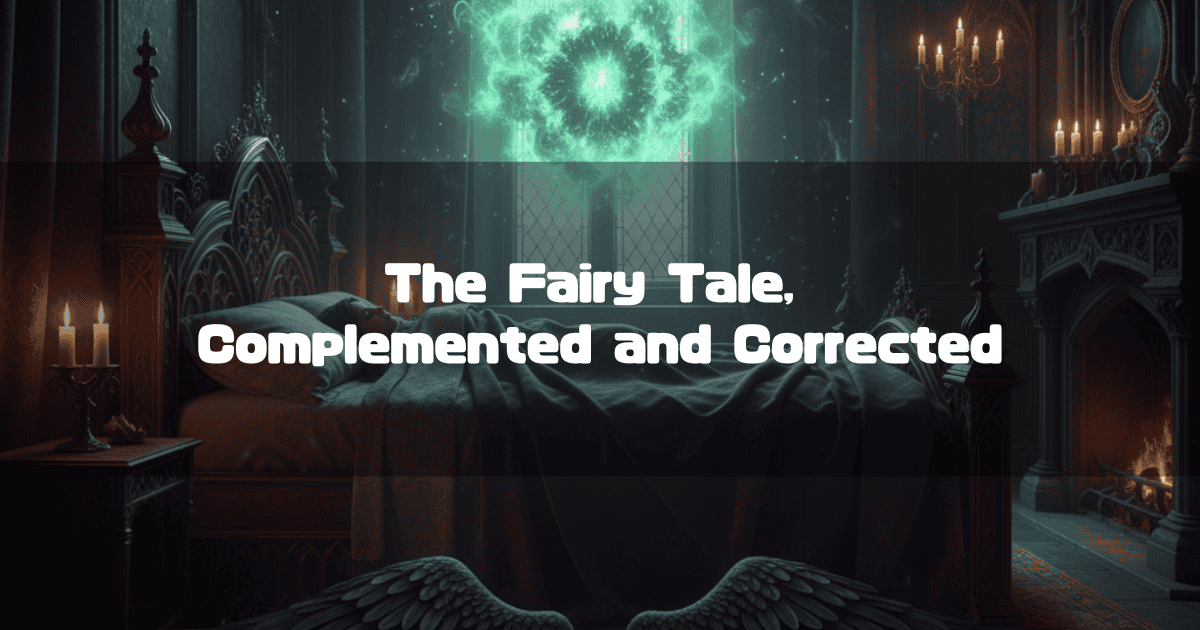
An Answer to “Maleficent’s Overreaction Problem”
A key feature of the movie Maleficent is its detailed depiction of the prequel story leading up to Aurora’s birth.
From a modern perspective, this level of detail is necessary to sustain a feature film, but it can also be seen as an answer to “Maleficent’s overreaction problem” in Sleeping Beauty.
Sleeping Beauty begins with Aurora’s birth. The long-childless king and queen hold a grand celebration, but Maleficent is not invited. Enraged by this slight, she curses the baby to “prick her finger on the spindle of a spinning wheel and die before the sun sets on her 16th birthday.”
In the context of a fairy tale, this development isn’t entirely outlandish, but one has to wonder, isn’t Maleficent’s anger a bit excessive?
While her displeasure is understandable, it seems like a rather trivial reason to curse a newborn baby (though perhaps those who have ever been snubbed from a party they should have been invited to might think differently).
However, in the movie Maleficent, the love story between the young Maleficent and Stefan is portrayed, along with Stefan’s incredibly cruel betrayal.
After witnessing such a heinous betrayal and selfish act, one might even think her curse was too lenient.
Thus, by properly depicting the prequel to the curse, the film cleverly avoids the “Maleficent’s overreaction problem” present in Sleeping Beauty.
Correcting the Unconvincing Nature of Prince Phillip’s “True Love”
In Sleeping Beauty, the sixteen-year-old Aurora is awakened by the kiss of Prince Phillip, whom she meets by chance in the forest.
Although there’s a “fated lovers” twist revealing they were betrothed, it feels far removed from what we would consider “true love.”
Observing Prince Phillip, it seems that for him, Aurora is merely a convenient escape from the pressures of his future responsibilities as king and his dissatisfaction with an arranged marriage to an unknown person.
Moreover, in Sleeping Beauty, the three fairies lovingly and devotedly raise Aurora for sixteen years, which makes Prince Phillip’s sudden appearance feel somewhat out of place.
Even when watching Sleeping Beauty, the feelings of the three fairies for Aurora seem far more like “true love”.
In Maleficent, the entity that nurtures this love is Maleficent herself.
Thus, the awkwardness surrounding “true love” in Sleeping Beauty is skillfully resolved by reframing it as “parental love,” and Prince Phillip’s position becomes much more natural. Well, since Phillip and Aurora seem to be attracted to each other, one hopes they will take the time to find their own “true love.”
So, while Maleficent expertly corrects the inconsistencies of Sleeping Beauty, the three fairies have become “victims” in the process.
The Sacrificed Three Fairies – Heroes Reduced to Fools
In Sleeping Beauty, the contributions of the three fairies were remarkable. They:
- Weakened the curse from “death” to “sleep,”
- Lovingly raised Princess Aurora for sixteen years, and
- Rescued Prince Phillip, who was imprisoned by Maleficent.
Aurora’s meeting with Prince Phillip was also a result of the fairies sending her to pick berries. It is no exaggeration to call Sleeping Beauty a heroic tale of the three fairies. And their affection for Aurora was truly moving.
However… in Maleficent, the fairies are a bunch of fools. They don’t notice Aurora’s contact with Maleficent, nor do they see her raven spy. In fact, there are even hints that they find taking care of Aurora to be a bit of a nuisance.
Fundamentally, the three fairies are unnecessary in Maleficent. If they are that inept and unhelpful, humans could have done the job. But if humans were to raise Aurora for sixteen years, they would naturally develop affection for her, and Maleficent’s love for Aurora would no longer be unique. The “true love’s kiss” could just be given by one of them.
Therefore, while following the idea from Sleeping Beauty of having the three fairies raise Aurora, they are used as peculiar beings who hold no special affection for the princess.
It’s safe to say the three fairies were sacrificed for the sake of the remake.
Perhaps the changing of the fairies’ names from Flora, Fauna, and Merryweather to Knotgrass, Thistlewit, and Flittle was a manifestation of guilt for debasing these heroes.
The Inconsistency of King Stefan Not Disposing of Maleficent’s Wings
Finally, let’s consider a point of contention unique to the movie Maleficent. That is, the issue of “King Stefan should have just disposed of Maleficent’s wings.“
One can rationalize King Stefan’s decision not to dispose of Maleficent’s wings to some extent. Stefan was a commoner who became king precisely because he was the hero who defeated Maleficent. Therefore, Maleficent’s wings are a symbol of King Stefan’s heroic tale. Even if he had wanted to get rid of them, those around him might not have allowed it.
This is the basic explanation for why King Stefan kept Maleficent’s wings.
However, watching the film, it seems to carry another meaning.
That is, for King Stefan, his love for Maleficent was a beautiful memory from his innocent youth, and he saw those days reflected in her wings.
In fact, although Stefan came close to taking Maleficent’s life, he could only bring himself to take her wings. He was not completely over his “ex-lover.” Moreover, this feeling is deeply comical, pathetic, and not something he could talk about with others.
It was because he harbored this kind of “unbalanced feeling” that he was unable to admit his “defeat” in the end, leading to his demise.
These are my personal thoughts on the movie Maleficent. I believe that by skillfully correcting and complementing the old work of Sleeping Beauty, one quite naturally arrives at Maleficent.
How did you all see the movie Maleficent?
About the Author
Recent Posts
- 2025-10-21
Indiana Jones and the Dial of Destiny(2023): Full Synopsis & Analysis: Indy’s True Motive and the Enigma of Helena - 2025-10-15
Indiana Jones and the Dial of Destiny(2023):Historical Background-WWII, the Real Dr. Schmidt, the Siege of Syracuse, and the Antikythera Mechanism - 2025-10-08
Why Does Children Who Chase Lost Voices Feel So Ghibli-esque? [Makoto Shinkai’s “Tale of Farewell”] - 2025-10-07
5 Centimeters per Second: Characters, Voice Actors, Character Analysis and Character Map - 2025-10-06
5 Centimeters per Second: Full Synopsis, Analysis, Ending Explained & Character Map (Spoilers)

